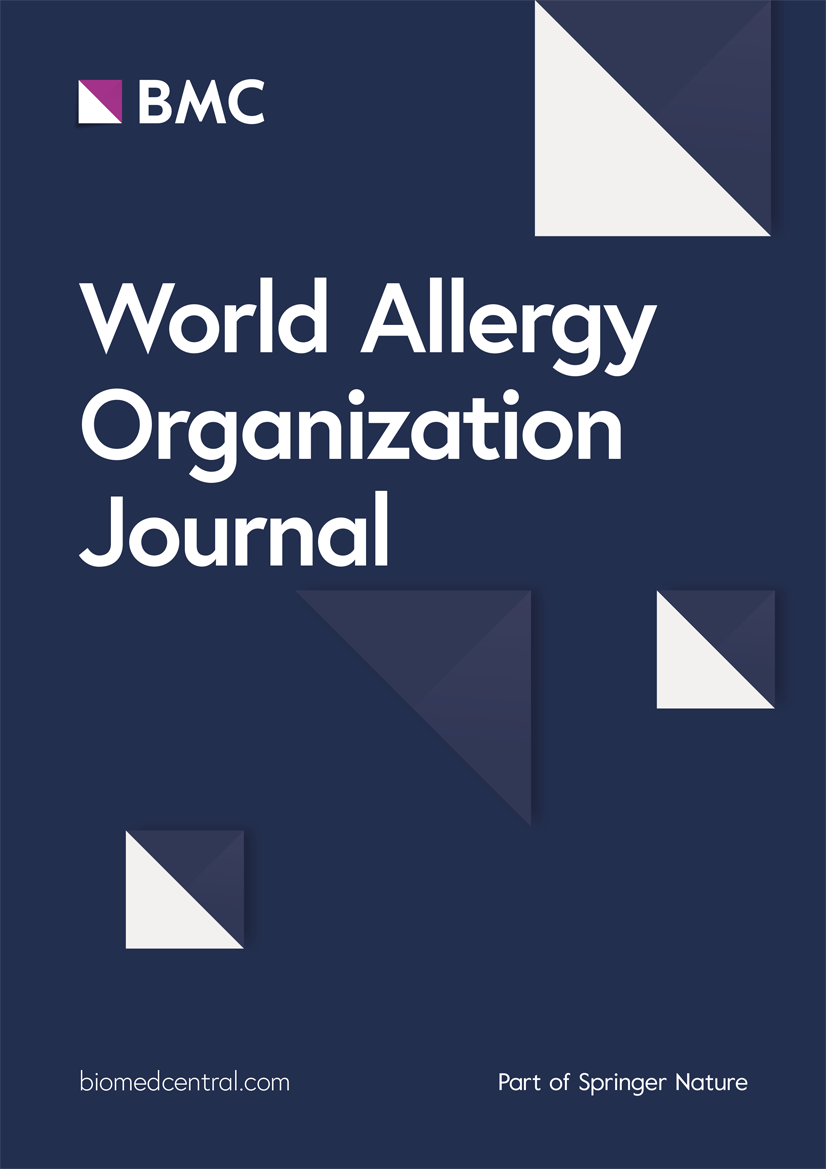Efficacy of omalizumab in food allergic adults - A retrospective analysis
IF 4.3
2区 医学
Q2 ALLERGY
引用次数: 0
Abstract
Background
IgE-mediated food allergy poses a significant public health concern, currently with no approved therapies for adults in Europe. Omalizumab (OMA) used as monotherapy or in conjunction with oral immunotherapy (OIT) has been suggested as an efficacious treatment for severe food allergy. The aim of this study was to analyze real-world data from food-allergic patients treated with OMA.
Methods
We included food-allergic patients treated with OMA between 2002 and 2022 throughout Europe. Treatment responders (TR) were identified based on the unresponsiveness to related food allergens (determined by food challenge), reduction in the severity of food allergy and absence of anaphylactic reactions.
Results
Sixty-two patients (female n = 39/62, 62.9%; mean age 30.6 years) were included into this analysis, most of whom were polysensitized to more than 2 food allergens (n = 40/62, 64.5%); 45/62 patients (72.6%) received OMA in conjunction with OIT, while the remaining patients underwent OMA monotherapy. The eliciting food allergens were tree nuts (n = 27/62, 43.5%), cow's milk (n = 26/62, 41.9%), and vegetables (n = 25/62, 40.3%). In most cases, OMA was initiated with 300 mg q4w (n = 51/62, 82.3%) dosing. Treatment was tolerated exceptionally well.
Fifty-two (52/62) patients (83.9%) were classified as treatment responders. Six (6/62) patients (9.7%) developed unresponsiveness, 6/62 (9.7%) had a reduction of the severity of food allergy, and 40/62 (64.5%) had no further anaphylactic reactions during treatment. One (1/62) patient (1.6%) undergoing monotherapy was a non-responder, exhibiting repeated anaphylactic reactions to accidental exposures, and 10/62 patients (16.1%) reported anaphylactic reactions during treatment. In most of these cases, cofactors (n = 5/10, 50%) were present.
Conclusion
Our real-world evidence data indicate efficacy and tolerability of OMA for the treatment of IgE-mediated food allergy with and without OIT. As the onset of food related reactions upon treatment was frequently linked to the presence of cofactors, these should be identified and considered in patients with food allergy—not only for diagnosis, but also in treatment settings.
omalizumab治疗成人食物过敏的疗效回顾性分析
dige介导的食物过敏引起了重大的公共卫生问题,目前在欧洲没有批准的成人治疗方法。Omalizumab (OMA)作为单一疗法或与口服免疫疗法(OIT)联合使用已被认为是严重食物过敏的有效治疗方法。本研究的目的是分析OMA治疗的食物过敏患者的真实数据。方法我们纳入了2002年至2022年间全欧洲接受OMA治疗的食物过敏患者。治疗应答者(TR)是根据对相关食物过敏原的无反应(由食物刺激确定)、食物过敏严重程度的减轻和没有过敏反应来确定的。结果62例患者中,女性39/62例,占62.9%;平均年龄30.6岁),其中大多数对2种以上的食物过敏原多致敏(n = 40/62, 64.5%);62例患者中有45例(72.6%)接受OMA联合OIT治疗,其余患者接受OMA单药治疗。引起过敏原的食物为坚果(n = 27/62, 43.5%)、牛奶(n = 26/62, 41.9%)和蔬菜(n = 25/62, 40.3%)。在大多数病例中,OMA的起始剂量为300mg / 4w (n = 51/ 62,82.3%)。治疗的耐受性非常好。52例(52/62)患者(83.9%)被分类为治疗应答者。6例(6/62)患者(9.7%)出现无反应性,6/62(9.7%)患者的食物过敏严重程度减轻,40/62(64.5%)患者在治疗期间没有进一步的过敏反应。1例(1/62)接受单一治疗的患者(1.6%)无反应,对意外暴露表现出反复的过敏反应,10/62(16.1%)患者在治疗期间报告了过敏反应。在大多数病例中,存在辅助因子(n = 5/ 10,50 %)。结论:我们的真实世界证据数据表明,OMA治疗ige介导的食物过敏有或没有OIT的有效性和耐受性。由于治疗后食物相关反应的发生经常与辅助因子的存在有关,因此在食物过敏患者中应识别和考虑这些因素-不仅用于诊断,而且在治疗环境中也是如此。
本文章由计算机程序翻译,如有差异,请以英文原文为准。
求助全文
约1分钟内获得全文
求助全文
来源期刊

World Allergy Organization Journal
Immunology and Microbiology-Immunology
CiteScore
9.10
自引率
5.90%
发文量
91
审稿时长
9 weeks
期刊介绍:
The official pubication of the World Allergy Organization, the World Allergy Organization Journal (WAOjournal) publishes original mechanistic, translational, and clinical research on the topics of allergy, asthma, anaphylaxis, and clincial immunology, as well as reviews, guidelines, and position papers that contribute to the improvement of patient care. WAOjournal publishes research on the growth of allergy prevalence within the scope of single countries, country comparisons, and practical global issues and regulations, or threats to the allergy specialty. The Journal invites the submissions of all authors interested in publishing on current global problems in allergy, asthma, anaphylaxis, and immunology. Of particular interest are the immunological consequences of climate change and the subsequent systematic transformations in food habits and their consequences for the allergy/immunology discipline.
 求助内容:
求助内容: 应助结果提醒方式:
应助结果提醒方式:


